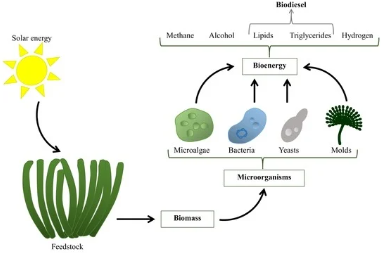Microbes, not fossil fuels, produced most new methane: study (GS Paper 3, Environment)

Context
- A modelling study has found methane emissions from fossil fuels declined between 1990 and the 2000s and have been stable since, whereas microbes have been producing more methane of late.
Evolving understanding
- Methane is the second most abundant anthropogenic greenhouse gas after carbon dioxide (CO2) but it warms the planet more.
- Over a century, methane has a global warming potential 28-times greater than CO2, and even higher over shorter periods like two decades.
- It wasn’t until recently that policymakers began to focus on methane vis-a-vis addressing global warming.
- At the U.N. climate talks in 2021, member countries launched the ‘Global Methane Pledge’ to cut the gas’s emissions and slow the planet’s warming. Yet our understanding of methane also continues to evolve.
- For instance, scientists have recently reported that microbes have been the biggest sources of methane in the atmosphere, not the burning of fossil fuels.
The sources of methane
- Scientists are increasingly recognising various sources of methane, most of which fit in two categories: biogenic and thermogenic.
- When fossil fuels such as natural gas or oil are extracted from deep within the earth’s crust, thermogenic methane is released.
- Biogenic methane comes from microbial action.
- The microbes that produce methane are archaea — single-celled microorganisms distinct from bacteria and eukaryotes — and are called methanogens.
- They thrive in oxygen-deficient environments, such as the digestive tracts of animals, wetlands, rice paddies, landfills, and the sediments of lakes and oceans.
- Methanogens play a crucial role in the global carbon cycle by converting organic matter into methane.
- While methane is a potent greenhouse gas, its production by methanogens is an essential part of natural ecosystems.
- But human activities like agriculture, dairy farming, and fossil fuel production have further increased methane emissions.
- Both biogenic and thermogenic activities produce different isotopes of methane.
Modelling with a supercomputer
- Tracking the isotopes is a way to track which sources are the most active and according to scientists, carbon-13 is key.
- If there are fewer carbon-13 atoms than a certain level in a group of 1,000 methane molecules, the methane is from a biological source.
- If the methane is from thermogenic sources, such as trapped fossil fuels or geological activities, there will be more carbon-13 atoms in 1,000 molecules.
- A team compared their own results with two emissions inventories, called EDGAR and GAINS, and found some discrepancies.
- EDGAR had reported that methane emissions from oil and natural gas exploration had increased between 1990 and 2020.
- GAINS had recorded a large “unconventional” rise in emissions since 2006. Their findings disagreed with both inventories.
Need for local data
- One possible reason could be an increase in cattle-rearing in Latin America and more emissions from waste in South and Southeast Asia, Latin America, and Africa. And number of wetlands worldwide had increased as well.
- Studies in the past have pointed to microbes like anaerobic archaea as potentially top contributors of atmospheric methane using satellite data.
- But according to scientists, Most studies that use satellites cannot measure the actual [changes over time] of methane.
- Satellite data is interpreted using models and thus are prone to uncertainties.
Conclusion
- The only way is to reduce methane. For that, anthropogenic activity should be first controlled. Waste and landfills, rice fields, enteric fermentation, oil and gas are the majority of it.


